|
In 1946 post war production got underway
with the introduction of a single deck 'Arab' and the
reintroduction of the pre-war version of the 'Arab' double decker. The single deck version had a 17 ft. 6 inch wheelbase,
and in common with the double deck model had a Wilson preselective, epicyclic, constant mesh gearbox, and a friction
clutch. All chassis were road tested by travelling from the
factory to Bridgnorth and back.
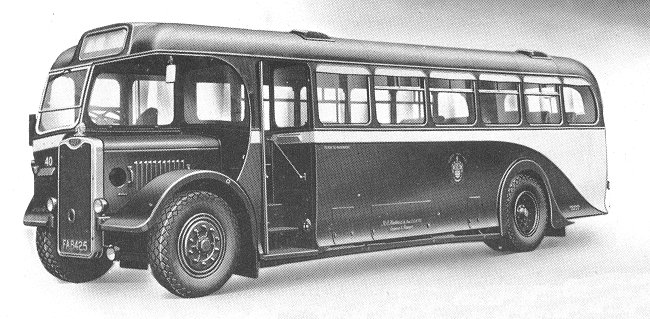
An 'Arab' single decker used in
Burton-on-Trent.
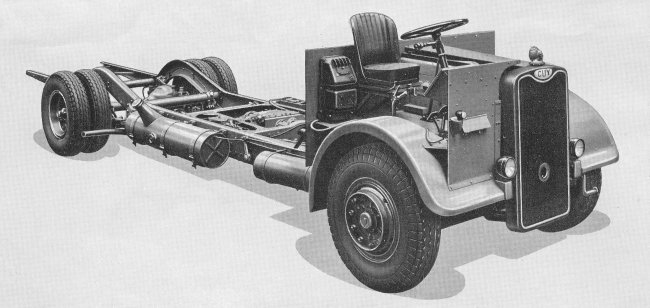
The 'Arab' single deck chassis. Courtesy
of Brian Shaw.
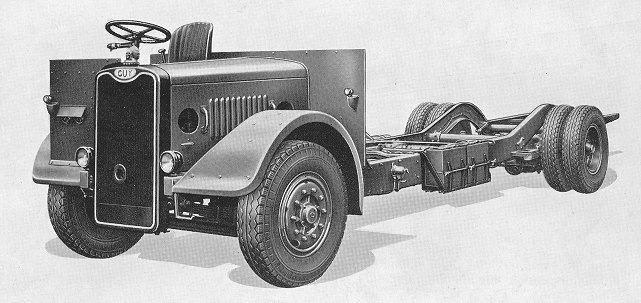
Another view of the 'Arab' single deck
chassis. Courtesy of Brian Shaw.

The driver's seat and controls on an
'Arab' single deck chassis. Courtesy of Brian Shaw.

Specification of the single deck 'Arab'
chassis. Courtesy of Brian Shaw.
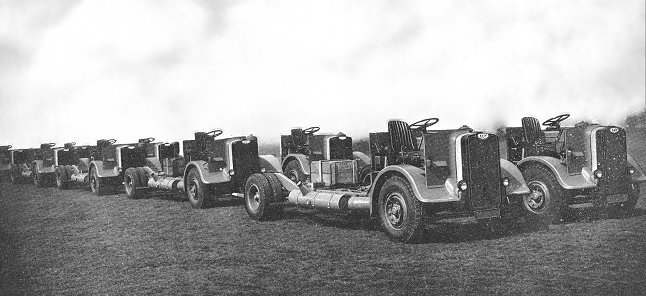
A fleet of 'Arab' single deck chassis
bound for Kenya. Courtesy of Brian Shaw.
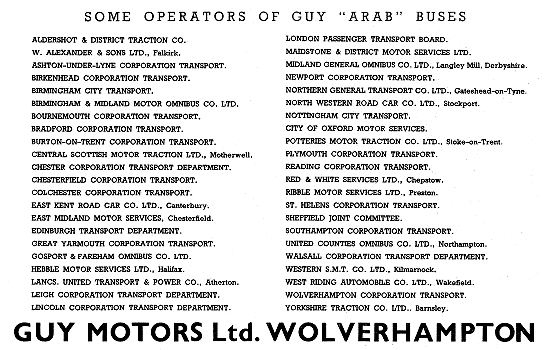
Courtesy of Brian Shaw.
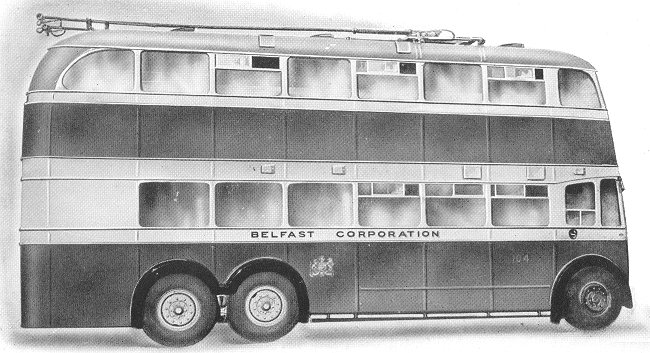
The first post-war trolleybus was built
for Belfast Corporation in 1947
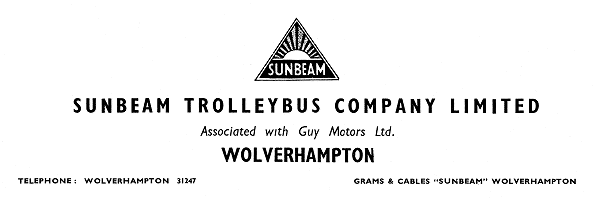
In 1948 Guy Motors acquired Sunbeam Commercial Vehicles Limited from Brockhouse,
which had owned Sunbeam for 2 years. From then-on all Guy
trolleybuses carried the Sunbeam name. Also in 1948 Guy made an
agreement with Park Royal, which allowed the company to produce
double deck bodywork on Park Royal frames. Initially trolleybus
production continued at Moorfield Works, but in 1953 production
moved to the Guy factory in Park Lane, were an extension had
been built to the machine shop. Trolley buses continued to see
well. By the mid 1950s there were more Sunbeam trolley buses in
South Africa than the total of all other makes. |
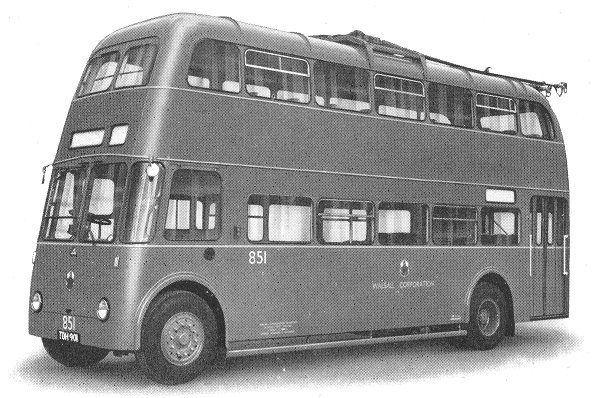
A Sunbeam 2 axle, double deck trolleybus, 30 ft.
overall length, built for Walsall Corporation in 1954.
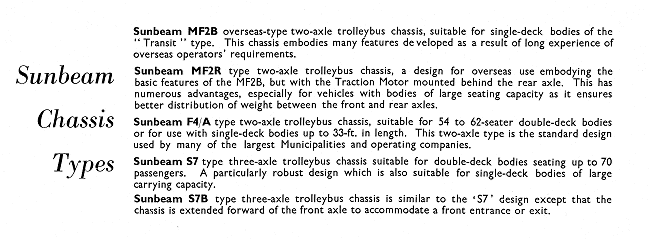
From a Sunbeam catalogue. Courtesy of Brian Shaw.
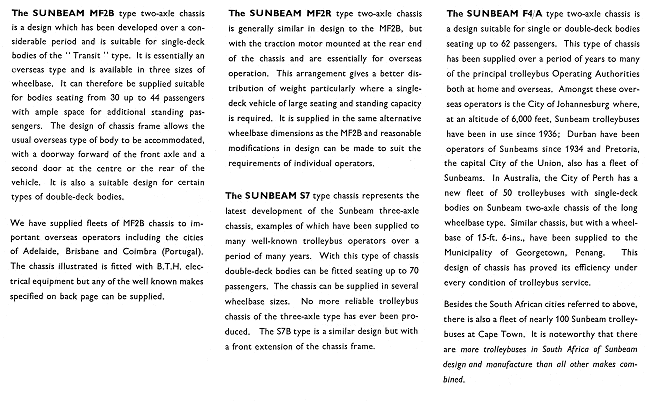
Sunbeam trolleybus chassis specifications. Courtesy of
Brian Shaw.
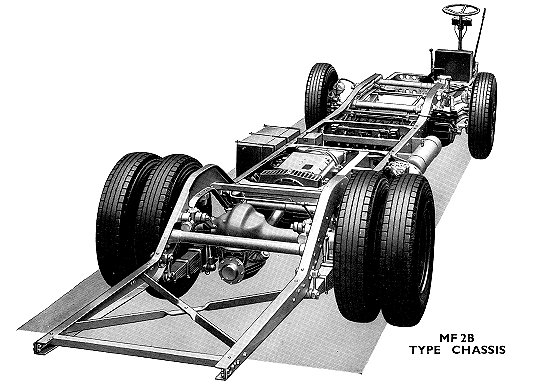
From a Sunbeam catalogue. Courtesy of Brian Shaw.
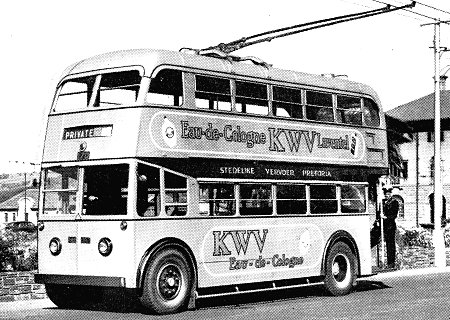 |
One of the fleet of Sunbeam
trolleybuses operated by Pretoria City Transport Department.
Courtesy of Brian Shaw. |
| One of the 170 Sunbeam trolleybuses
used at Huddersfield. Courtesy of
Brian Shaw. |
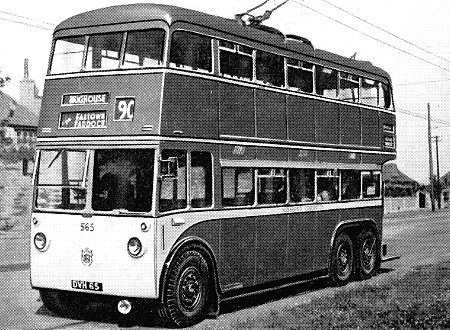 |
 |
One of the fleet of Sunbeam S7
trolleybuses used by Reading Corporation Transport Department.
Courtesy of Brian Shaw. |
| One of the large fleet of Sunbeam
trolleybuses used in the City of Johannesburg.
Courtesy of Brian Shaw. |
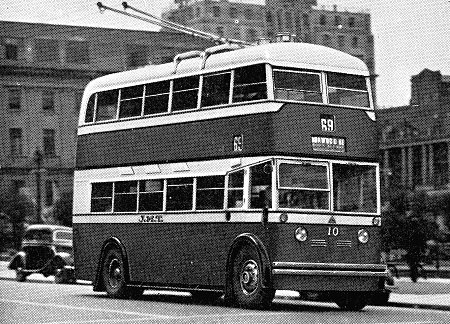 |
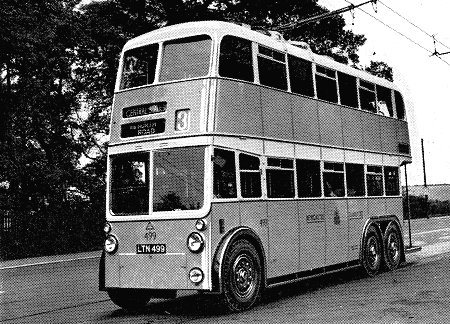 |
Newcastle-Upon-Tyne Corporation had
more than 100 Sunbeam trolleybuses in service.
Courtesy of Brian Shaw. |
| One of a fleet of Sunbeam trolleybuses
supplied to the Western Australian Government Tramways at Perth.
Courtesy of Brian Shaw. |
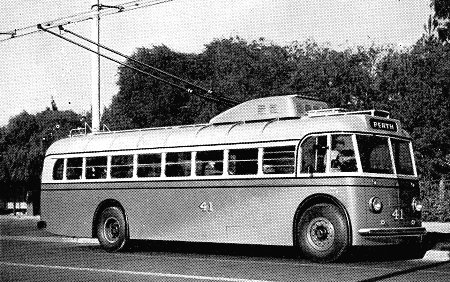 |
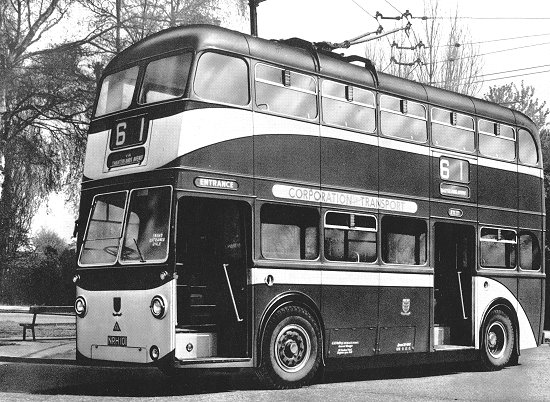
One of the large fleet of the City of
Kingston-upon-Hull's trolleybuses. Courtesy of Brian Shaw.
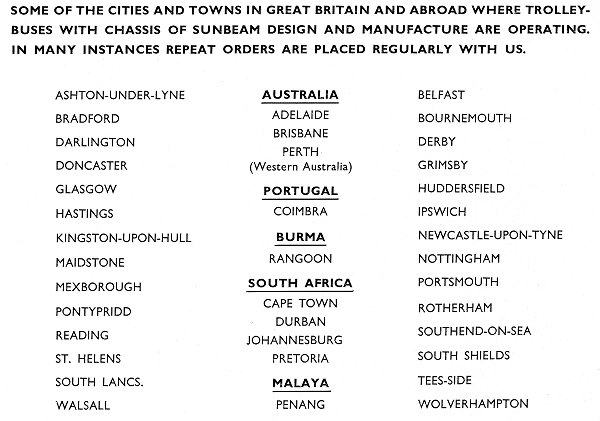
From a Sunbeam catalogue. Courtesy of Brian Shaw.
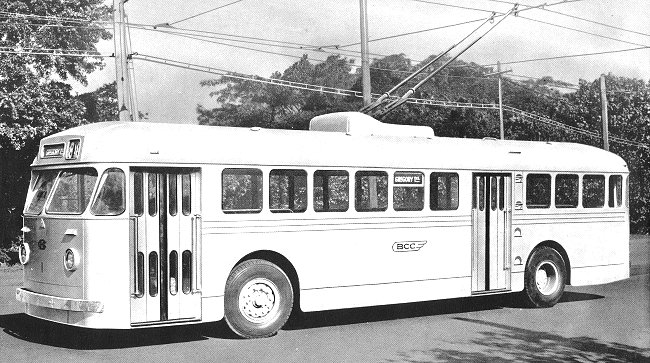
One of the large fleet of single deck Sunbeam
trolleybuses used in Brisbane. Courtesy of Brian Shaw.
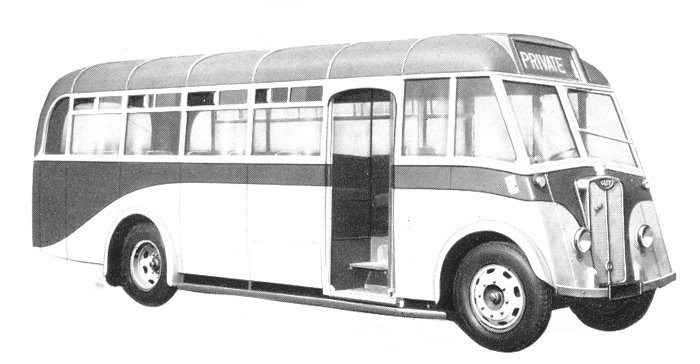
A 'Vixen' 30 seater coach.

An 'Arab' single decker used in Scotland.
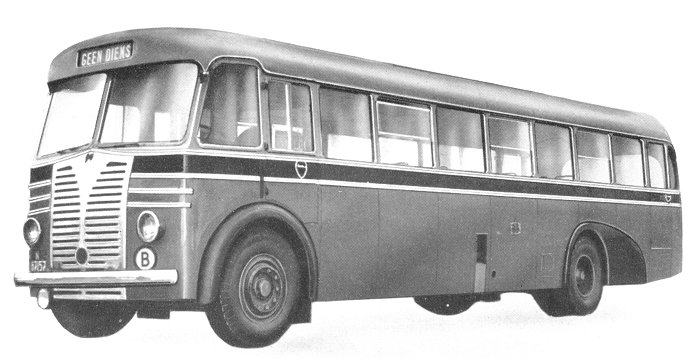
An 'Arab' single decker used in Holland.

A 'Vixen' 30 seater coach used in Holland.
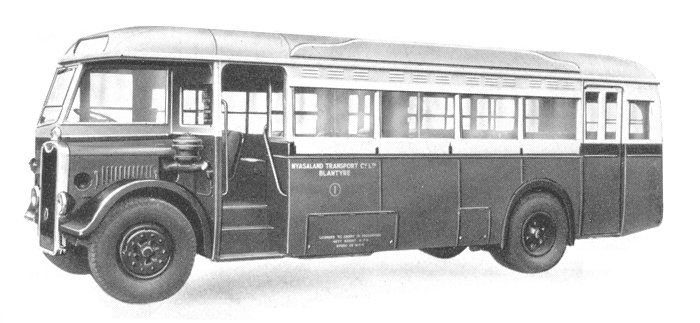
An 'Arab' single decker used in Nyasaland.
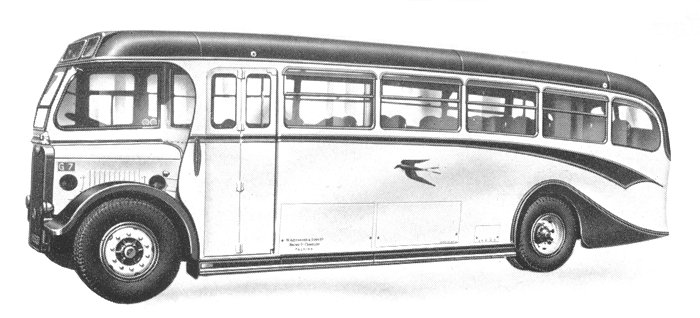
An 'Arab' luxury coach used in Scotland.

An 'Arab' double decker used in Southampton.
|
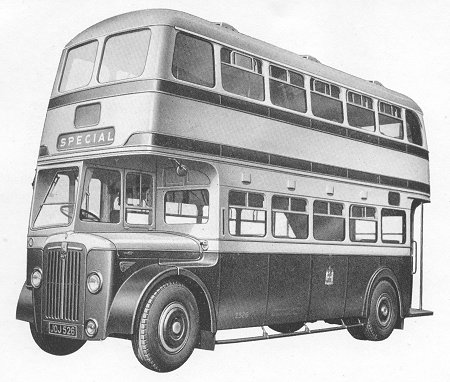
A Birmingham Corporation 'Arab' Mark IV. |
New versions of the 'Arab' appeared in 1950
including the underfloor-engined single decker and the 'Arab' Mark IV with a new style of radiator grille.
The Arab Mark IV was
developed for Birmingham Corporation, which took delivery of 300
chassis.
It was also produced as a 40 passenger
single decker with an 18 ft. 5 inch wheelbase. |
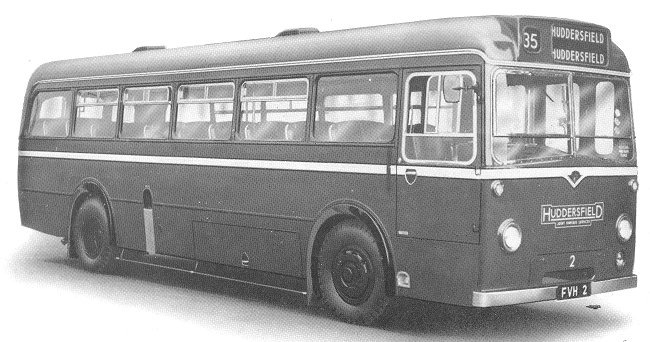
An underfloor-engined, single deck 'Arab'
designed for one man operation. Supplied to Huddersfield
Corporation. It had a 43-seater Guy body. |

Courtesy of Brian Shaw.

Courtesy of Brian Shaw.
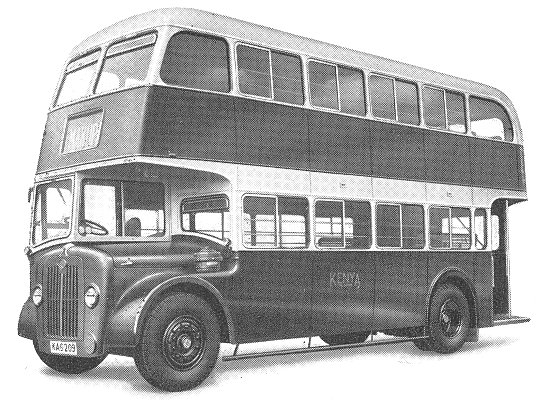 |
One of the large number of 'Arab'
Mark IVs supplied to African Transport Limited.
Courtesy of Brian Shaw. |
| East Kent Road Car Company Limited
operated over 190 Guy buses including 55 'Arab' MK IVs like
the one shown opposite.
Courtesy of Brian Shaw. |
 |
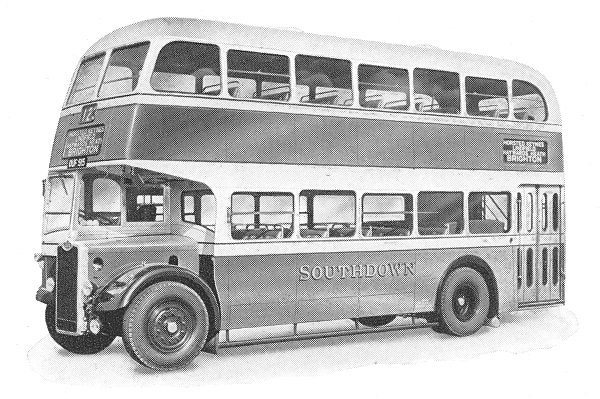 |
One of the 48 'Arab' MK IVs that
were operated by Southdown Motor Services Limited.
Courtesy of Brian Shaw. |
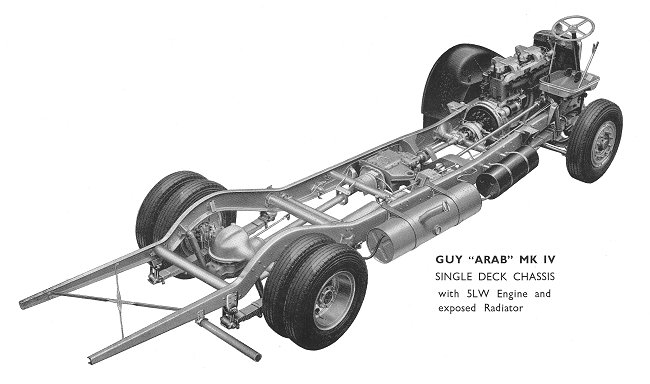
Courtesy of Brian Shaw.
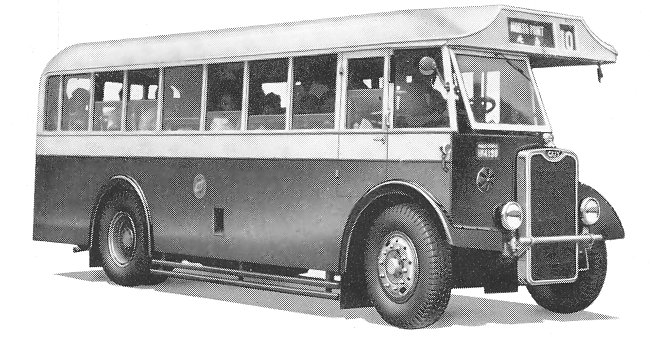
An 'Arab' Mark IV operated in Hong Kong by the
China Bus Company Limited. Courtesy of Brian Shaw.
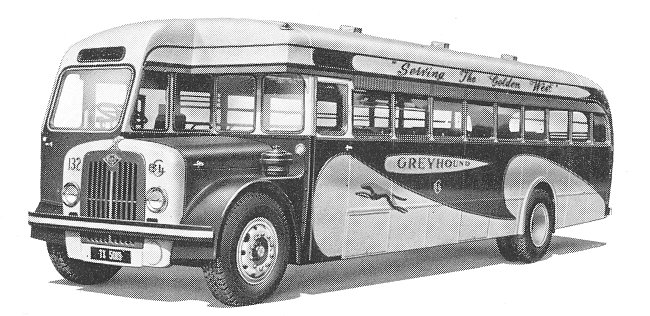
An 'Arab' Mark IV which operated in South Africa.
Courtesy of Brian Shaw.
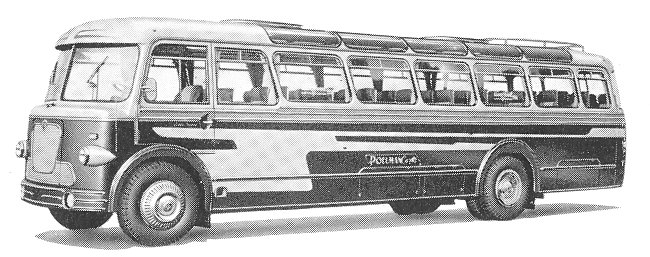
An 'Arab' Mark IV which operated in Belgium.
Courtesy of Brian Shaw.
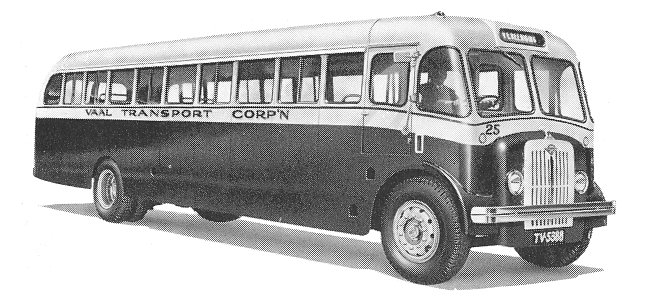
Another 'Arab' Mark IV which operated in South
Africa. Courtesy of Brian Shaw.
| In 1950 a new version of the 'Otter' chassis for 30-seater
body was introduced. It was similar to the 'Vixen' but had a
heavier chassis and different sized wheels. London Transport
ordered 84 'Vixen' chassis, fitted with Perkins 'P6' diesel
engines. During 1953 Guy developed a small rural bus for London
Transport, based on the 'Vixen', but with some 'Otter' parts.
The 'Otter' passenger chassis was available with a 6-cylinder
Perkins P6, or a 4-cylinder Gardner 4LK engine. The chassis
weight in full running order was 2 tons 13¾
cwts. with the 4-cylinder engine, or 2 tons 14¼ cwts. with the
6-cylinder engine. The chassis had a 5-speed gearbox,
and semi-elliptic front and rear spring suspension with telescopic
hydraulic shock absorbers at the front and rear. |
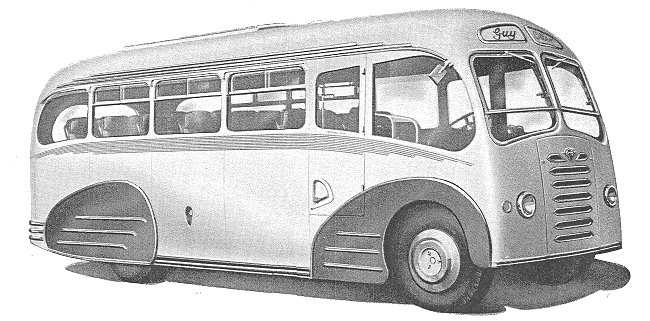
An 'Otter' coach.
| In the early 1950s the costs of passenger vehicle operation were
continually rising. This created a demand for a lightweight
chassis to reduce fuel consumption. As a result Guy developed
the 'Arab' lightweight, heavy duty, underfloor-engined bus,
introduced in 1953.
 |
|
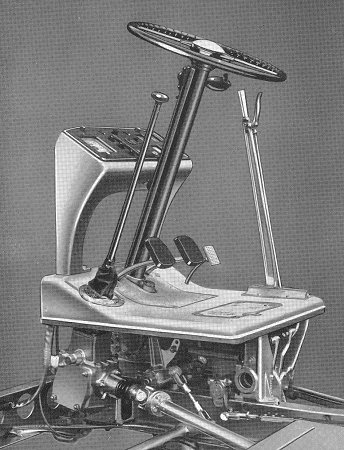
The neat and easily accessible panel, and
controls. |
The 'Arab' chassis was powered by a Gardner 5HLW, or a
Gardner 6HLW engine, with 4-speed plus reverse epicyclic,
constant mesh gearbox.
Automatic chassis lubrication was available as an extra.
The chassis consisted of a strong, rigid assembly, consisting
of two main channels, with channel section flitch plates
inserted at the point of maximum stress, channel section and
tubular cross members, and an extreme front channel, extended
outside the frame to provide an exceptionally low step.
As in other Guy chassis, fitted bolts were used rather tan
rivets.
The wheelbase was 16 ft. 4 inches, and the chassis was 8 ft.
wide. |
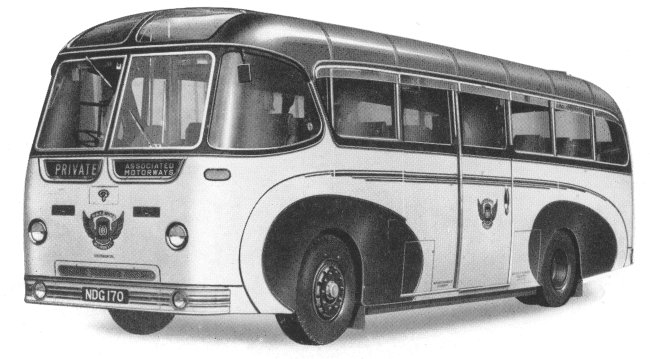
An 'Arab' lightweight, heavy duty, underfloor-engined
coach, built in 1954.
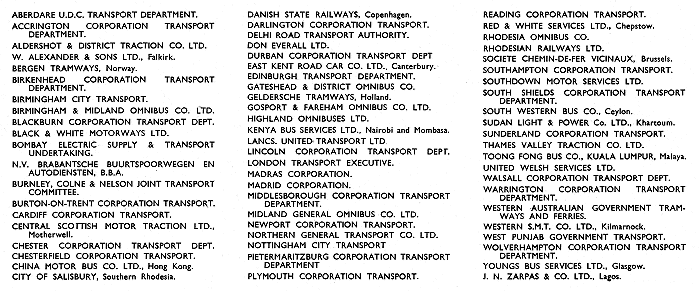
Some of Guy's customers in the 1950s.
| By 1954 Guy passenger vehicles were operated by 150
companies in the UK, and abroad, in 26 countries. During 1954 the
company developed the first 2-axle trolleybus chassis with an
overall length of 30 ft. for Walsall Corporation's Transport
Department. The department's general manager, Mr. Edgley Cox had
obtained permission from the Ministry of Transport to operate
2-axle 30 ft. long double deck trolley buses, which could seat
68 passengers. 15 chassis were supplied, and they were fitted
with Willowbrook bodies. The new buses were a great success, and
the law was changed the following year to allow the design to be
used elsewhere.
In 1955 Guy Motors made what would eventually turn out to be a
fatal mistake, the opening of subsidiaries in Cape Town, Durban,
and Johannesburg. The company’s vehicles sold in large numbers
in South Africa, a country which was greatly liked by Sydney Guy
after he spent some time there recovering from pneumonia. Until
then South African sales had been efficiently handled by a
number of agents appointed by the company, but that all changed
when Guy Motors sold directly to local vehicle operators.
|

A Guy 'Warrior' vertical engined passenger chassis.
| A further development of the 'Warrior' was the vertical
engined passenger chassis, built from 9 inch deep x 3 inch wide
x ¼ inch thick, high tensile steel
pressings. It had an alloy steel 'I' section front axle, a
two-speed, fully floating rear axle, Bendix-Westinghouse
air-hydraulic brakes, and cam and double roller steering gear.
The suspension consisted of overslung semi-elliptic springs at
the front and rear, with lever type shock absorbers at the
front. It was powered by a Gardner 4LW engine, or a 7.685 litre
oil engine. The chassis was suitable for 40 to 42 seater bodies. |
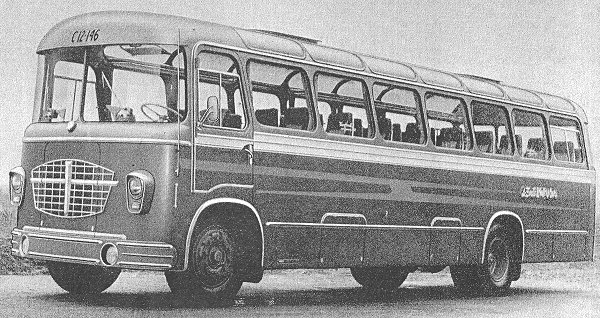
A Guy 'Warrior' coach.
| Another development of the 'Warrior' was the lightweight
underfloor engined passenger chassis, called the L.U.F. for short. It
was usually powered by a Gardner 5HLW oil engine, although other
engines were available to suit individual requirements. The
lightweight chassis was intended for 30 ft. bus or coach bodies,
and designed for reliability, and a long working life. |
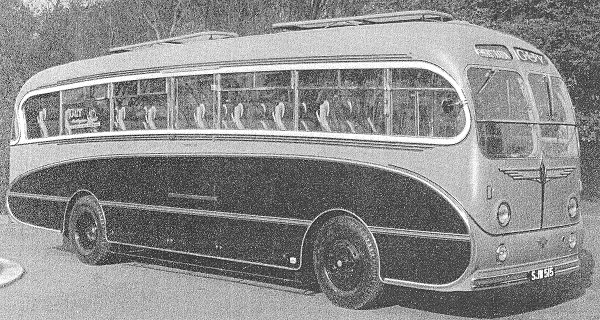
A 'Warrior' L.U.F. coach.
|
Sydney Guy, the company's founder, retired in 1957 after 43
years with the company. He died at his home in Albrighton
on the 21st September, 1971. He was 86 years old.
In the autumn of 1958 Guy Motors introduced the 'Victory'
high performance, maximum capacity, single deck bus or coach
chassis. Versions were available for the home market, and also
the European, and Commonwealth markets.

The front cover of the 1958 Guy 'Victory'
literature. Courtesy of Brian Shaw.
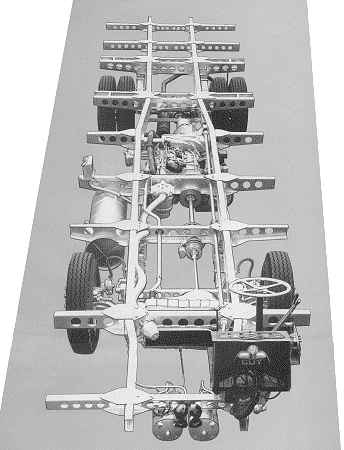 |
|
 |
|
The
'Victory' chassis and features. Courtesy of Brian
Shaw. |

The 'Victory' specification. Courtesy of
Brian Shaw.
Guy also produced the 'Seal' lightweight single deck bus or
coach chassis, available with a long or short wheelbase. The
underfloor engined chassis was designed for use as a high
performance, small capacity tourist coach, or as a small bus for
feeder service routes.
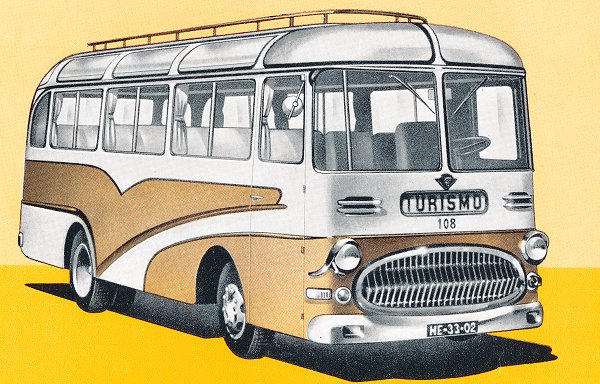
A Guy Motors 'Seal' small capacity tourist
coach. Courtesy of Brian Shaw.
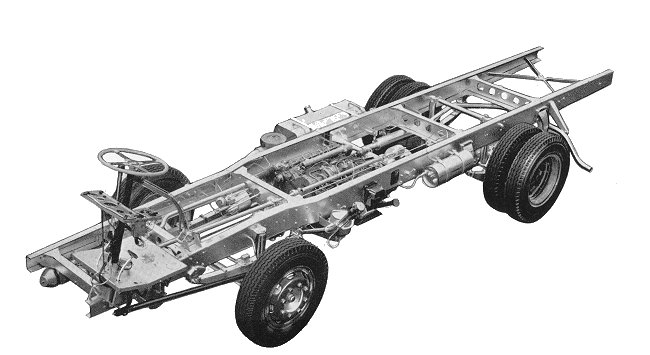
The 'Seal' chassis. Courtesy of Brian
Shaw.
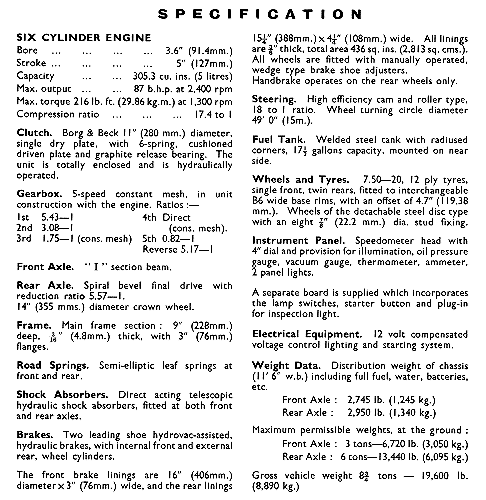
The 'Seal' specification. Courtesy of
Brian Shaw.
In the mid 1960s Guy Motors decided to build an advanced
passenger chassis with air suspension, to give a smoother ride.
The company had gained some experience after building a number
of coaches with air suspension for Greyhound in America. The
project was certainly bold, considering that at the
time the company had limited financial resources, and so it had
to be run on a shoe string. It began with consultation, during
which Guy personnel talked to a number of bus operators to
discover their future requirements for a low-height, double deck
chassis. The outcome was that it should be 30 ft. long, 8 ft.
wide, with a front engine, seating 78 passengers.
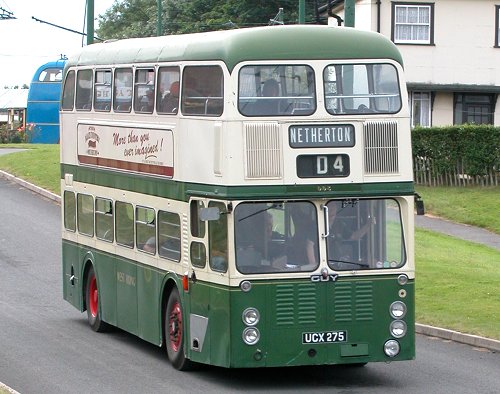
A Wulfrunian bus, as seen at the Black
Country Living Museum in 2005.
The new chassis, called the 'Wulfrunian' was a development of the Guy 'Victory Airide'
single decker chassis, introduced at the 1958 Earls Court Show.
The 'Wulfrunian' included many new features, some of which were
not sufficiently tried and tested. It had anti-roll air
suspension, independent front suspension, disc brakes, automatic
transmission, few oiling points, and on paper appeared to be
years ahead of the competition.
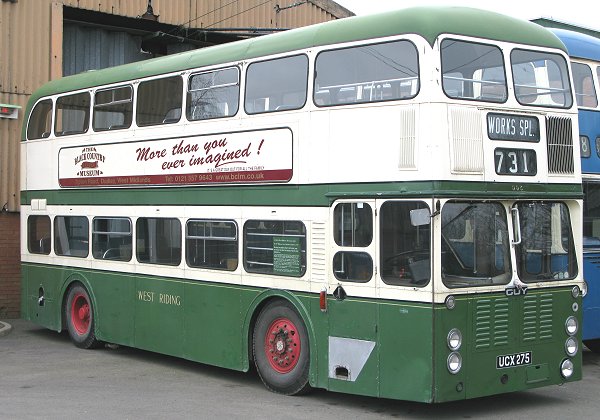
Another view of the 'Wulfrunian'.
|
Read a technical description of
the 'Wulfrunian'. |
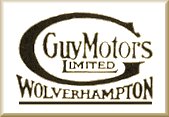 |
Unfortunately it turned out to be a disaster for both Guy Motors
and
its customers. Operators purchased the 'Wulfrunian' because of
the reputation of Guy 'Arab' buses, which were well designed,
and extremely reliable. The same could not be said of the 'Wulfrunian',
which rapidly got an extremely bad reputation. There were
several problems including brake seal failure, trouble with the
air suspension, disc brake overheating because of the constant
stopping and starting, and some chassis fractures, which led to
escalating warranty costs. All these could have been rectified,
but Guy Motors did not have the financial resources to do so.
Customers must have been extremely disappointed with the
unreliable design, which resulted them having to replace the
vehicles after a relatively short period of time. 137 'Wulfrunians'
were built, 126 going to the West
Riding Automobile Company. The first two were purchased by
Wolverhampton Corporation, one with an entrance at the front, the
other with the entrance behind the front wheels.

A final view of the 'Wulfrunian'.
1958 also saw
the appearance of the 'Warrior Trambus' consisting of a
modified 'Warrior' truck chassis which was designed at short notice for a
Greek customer.
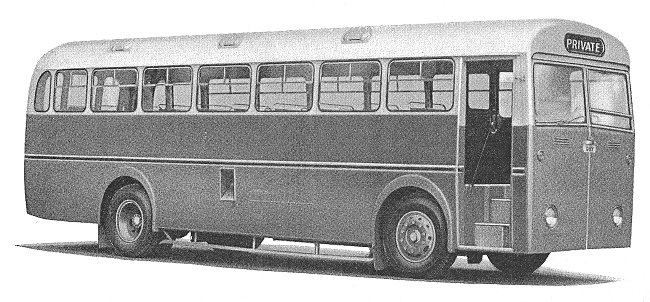
A Guy 43-seater 'Warrior Trambus'.
The 'Trambus' was powered by an A.E.C.
6-cylinder, 135 b.h.p. engine, and had a 5-speed synchromesh
gearbox, driving an open tubular type propeller shaft into the
rear 2-speed driving axle, with electric shift control. The
suspension used overslung semi-elliptic leaf springs, with
double-acting hydraulic dampers at the front. |
 |
|
 |
|
 |
Return to
World War 2 |
|
Return
to the
beginning |
|
Proceed to
The Final Chapter |
|